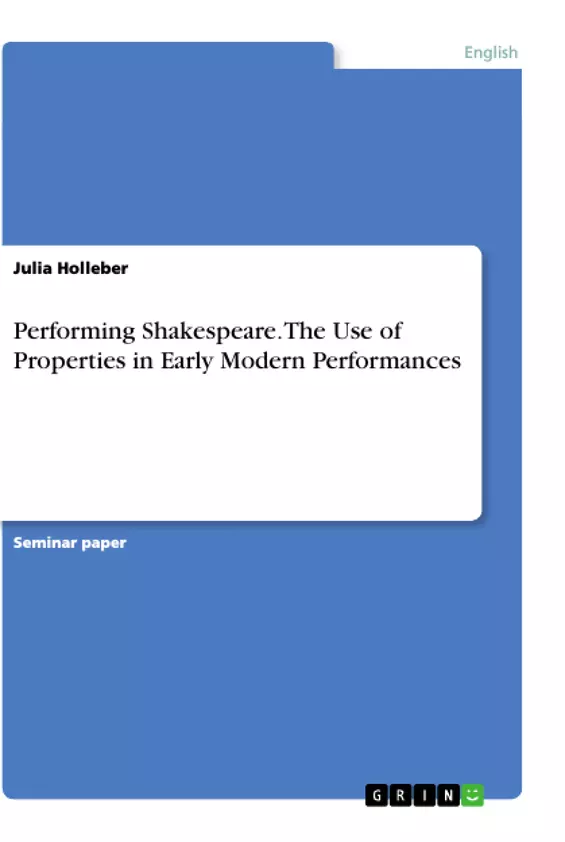The aim of this scholarly exposition is to give a brief introduction into how the various places of performances affected the use of properties on the Early Modern Stage. After introducing the two main playhouses of Shakespeare’s company the King’s Men, the Globe and the Blackfriars, the properties commonly used by the players will be examined.
When thinking of Early Modern Theatre, the Globe is one of the first things that come to mind, being "an icon of English dramatic and literary history and one of the most famous buildings in the world". The outdoor playhouse, built by the company the Lord Chamberlain's Men of which Shakespeare was a member, opened in 1599 and was located at the south bank of the River Thames in London.
Even though many of the company's performances took place there, this was not the only location they used for staging Shakespeare's plays. By 1611, the company which was now called the King’s Men, also performed in the indoor playhouse Blackfriars, at court or in private houses by invitation. Additionally, the company went touring through the country. As the actors performed in many different locations, they had to adapt the staging of the play to the changing circumstances.
Inhaltsverzeichnis (Table of Contents)
- Theatre Review of Richard II
- Theatre Review of Richard III
- Scholarly Exposition
- Introduction
- The Globe
- The Blackfriars
- The use of properties on the Early Modern Stage
- Conclusion
Zielsetzung und Themenschwerpunkte (Objectives and Key Themes)
This document provides an overview of Shakespearean performance practices and their adaptation in contemporary productions. It examines the historical context of early modern performances, particularly focusing on the use of properties on the stage. Additionally, the document analyzes two contemporary theater reviews, exploring the use of props, costume, and staging techniques in modern interpretations of Shakespeare's plays.
- Early Modern Performance Practices
- The Use of Properties in Shakespearean Plays
- Contemporary Adaptations of Shakespeare
- Historical Context and Cultural Influences
- Critical Analysis of Modern Theatrical Productions
Zusammenfassung der Kapitel (Chapter Summaries)
- Theatre Review of Richard II: This chapter reviews a minimalist staging of Shakespeare's Richard II by the English ensemble anarché. The review highlights the play's central themes of power, ambition, and the fragility of kingship, focusing on the use of key props, such as a silver ring representing the crown and a shattered mirror symbolizing Richard's downfall. The chapter also analyzes the modern costumes and the actors' adaptation to the unusual stage setting.
- Theatre Review of Richard III: This chapter reviews a modern and creative interpretation of Shakespeare's Richard III directed by Axel Vornam. The review focuses on the stage design, including the use of dirt and rain, which symbolize the play's themes of political corruption, ambition, and the fragility of peace. The chapter highlights the use of costumes and the actors' performance to convey these themes.
Schlüsselwörter (Keywords)
This document primarily focuses on the use of properties in early modern performance practices and their role in conveying meaning and creating theatrical effects. The keywords include Shakespearean theatre, performance history, properties, stage design, costume design, directorial choices, Richard II, Richard III, anarché ensemble, Heilbronn Theatre, and contemporary adaptations. The document emphasizes the influence of historical context on contemporary interpretations of Shakespeare's works.
- Quote paper
- Julia Holleber (Author), 2019, Performing Shakespeare. The Use of Properties in Early Modern Performances, Munich, GRIN Verlag, https://www.hausarbeiten.de/document/889169


